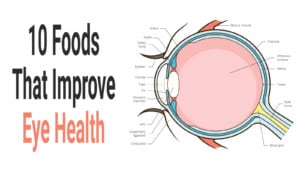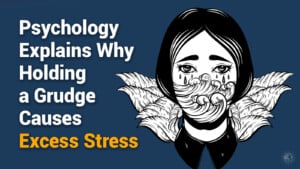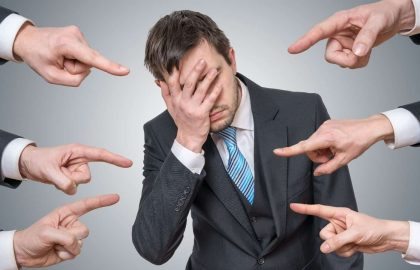They say that your eyes are the window to your soul. When these spiritual windows are open to others, what can they decipher about you? Psychologists assert that your eye contact says a lot about your personality.
Most predatory animals, including humans, have forward-facing eyes that give them a binocular vision. Our early ancestors could easily focus on their prey as well as dangerous animals and situations to avoid. Your eyes still provide safety and are continually processing pictures of the world around you.
Did you know that roughly half of your body’s sensory receptors are found in your eyes? They can detect visible light wavelengths up to 700 nanometers and many spectra of colors. Six extrinsic eye muscles control their complex movement.
When you combine positions of your eyelids and eyebrows, your eyes help to create instantly recognizable expressions. Humans are adept at interpreting eye contact, so we assume that someone looking into our eyes has nothing to hide. How you use your eyes to communicate with others usually mirrors what you are feeling or thinking.
What the Eyes Say Without Uttering a Word
Think of all the idioms you’ve heard about eyes and personality. They say a shifty-eyed person can’t be trusted. “She loves him, and you can see it in her eyes.” “He couldn’t even look me in the eyes and tell me the truth.”
Good eye interaction with others suggests that you are confident in your abilities. People may view you as more successful, and you may have better leadership qualities than those who avert their eyes. Your gaze may reveal an attraction to another, or it can imply aggression and malice.
Some cognitive disorders, such as the autistic spectrum, are known for their avoidance of connecting with other people’s eyes. Many people who battle depression, anxiety, or ADHD have difficulty focusing their eyes, especially when in a conversation. For others, eye connection aversion may be low self-esteem from a lack of confidence and basic shyness.
Understanding Eye Communication
While you assume that anyone who looks you eye-to-eye is telling the truth, it’s not necessarily so. Pathological liars often use eye connection to manipulate people into believing their lies. They often become so jaded that they can lie without as much as a blink. Here are some other things your eyes can show.
• Friendliness and Familiarity
When you are in public and surrounded by strangers, you can expect to meet a few people’s glances. However, most people only look strangers in the face for only a couple seconds, and then they look away. Looking at someone any longer becomes staring, and it makes others feel uncomfortable.
Friends and acquaintances will usually meet your eyes in a longer, natural way. Close friends and family can often look into your eyes and intuitively know how you feel before asking. You may tell them that you are feeling fine, but your eyes can betray you.
• Authority and Trustworthiness
If you want others to respect your authority, you must look them straight in the eyes when you talk. Would you have much confidence in a person in leadership who was shy and kept averting his eyes? When you make direct eye contact and smile while conversing with or addressing a group, people will respect you more and will assume you are successful and trustworthy.
• Mutual Attraction
The eyes are only second to the heart when it comes to stories, songs, and art about love and romance. When you are attracted to someone, you instinctively gaze into his eyes as he does yours. Scientific research demonstrates that people who are attracted to each other look into the others’ eyes more often and for extended periods.
Do you want a special someone to be more than just friends? How do you look him in the eyes? He may think you aren’t interested if he sees you avoiding his eyes and looking all around.
Eye connection in sexuality is another point that divides us from the animals. Unlike most of them, humans are usually intimate face-to-face and eye-to-eye. We often feel more attracted to those who express attraction to us in their eyes.
• Intimidation
Have you ever watched two cats locked into a staring contest? In the animal kingdom, staring allows them to size up their adversaries. There is a wild glare that means a clash of wills is about to happen.
While we are not felines, we still use our eyes to intimidate others, often without thinking. Remember the sharp glance your mother gave you when you were misbehaving in public? She didn’t have to say a word, but you got the point.
• Memory Enhancement
Why is it that you may forget names, but you hardly ever forget a face? Your brain is making countless references and notations when you look into another person’s eyes. Your first impression of this person may be what her eyes tell you.
It will trigger a memory in your brain when you meet the person again and make eye contact. For this reason, psychologists encourage people to look at each other when meeting and often during conversation. Not only does it suggest to the other person that you are genuinely interested in what she has to say, but you will be more likely to remember her and the conversation.
Do Your Eyes Have It? Different Types of Eye Avoidance
How can you use proper eye contact to your advantage? Do you want to reflect confidence and honesty? Here are some helpful ways to identify common eye contact problems and how to improve them.
• The Low Looker
In many cultures, it is considered rude and forward to look at someone straight in the eyes, especially those of authority. A downcast glance shows reverence, respect, and humility. Unfortunately, women were often taught to keep their head and eyes lowered as a sign of loyalty and subservience.
If you are a low looker, then train yourself to hold your head high and meet other people’s eyes. Keep good posture, let your eyes show that you are friendly, intelligent, and subservient to no one.
• The Kewpie Doll
Have you ever seen one of these iconic baby dolls with their pixie smile and adorable side glance? You wonder what they are thinking. Whether it is from nervous tension or learned behavior, many people often avoid direct eye contact by looking to the side or a corner of the room.
“Kewpie dolls” personalities often have a difficult time when they are in leadership and must address a group. Are you one of these who keep your eyes glued to a corner rather than face your audience? Practice speaking in a mirror and retrain your eyes to look at the eyes of your listeners.
• The Rapid- Fire Blinker
Some people have a nervous tick in their eyes that often gets worse when they are talking to people, or they experience eye twitching. While they try to keep their eyes focused during a conversation, all the other people can see is a flurry of blinks and twitches. If they gradually gain control of their eyelids, a rapid-fire blinker may also be a low-looker or a kewpie doll.
Some rapid-fire blinkers not only blink, but they often have conversations with their eyes closed. Occasionally, they may open their eyes to flash a bit or to acknowledge what the other person is saying, but their eye contact is limited.
Do you want to remedy your Rapid-Fire Blinker habit and practice good eye connection? Since rapid blinking may be symptoms of a physical or mental condition, consult your professional healthcare provider. Practice keeping your gaze steady and relaxing your eyes.
• Give Your Eyes a Rest
Although making good eye connection is beneficial in a conversation, there can be too much of a good thing. When you are having a discussion with another person, some eye movement is expected. A thoughtful pause to glance up and think about what the person is saying is helpful because a constant stare will make others uneasy.
• Practice Makes Progress
Some people are naturally talented conversationalists, but you can learn these skills with practice. Maintaining proper eye connections with others can be practiced in front of a mirror or with a trusted friend. If you have one or more of these common eye aversion characteristics, you can retrain yourself.
As you talk to the mirror or your practice partner, train yourself to rest your sight at the other person’s eye level. If he wears glasses, you could focus on the rims or study his eyebrows, if you feel uneasy about looking pupil to pupil.
If you feel your eyes going back into their old habit of aversion, gently bring them back into focus. Ask your trusted practice partner to give you honest feedback and to let you know when your eyes aren’t making the proper connection.
Final Thoughts on Using Proper Eye Contact in Life
Using proper eye interaction in your professional and personal life can tell others a lot about you. Show people that you are self-confident and can make eye contact when you are conversing. You’ll discover that people will be more apt to confide in you and will see the confident, fascinating person you are.








